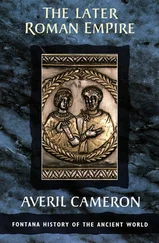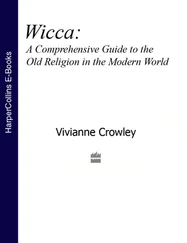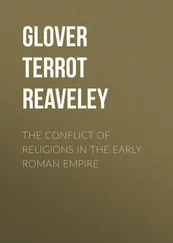Religion in the Roman Empire
Здесь есть возможность читать онлайн «Religion in the Roman Empire» — ознакомительный отрывок электронной книги совершенно бесплатно, а после прочтения отрывка купить полную версию. В некоторых случаях можно слушать аудио, скачать через торрент в формате fb2 и присутствует краткое содержание. Жанр: unrecognised, на английском языке. Описание произведения, (предисловие) а так же отзывы посетителей доступны на портале библиотеки ЛибКат.
- Название:Religion in the Roman Empire
- Автор:
- Жанр:
- Год:неизвестен
- ISBN:нет данных
- Рейтинг книги:5 / 5. Голосов: 1
-
Избранное:Добавить в избранное
- Отзывы:
-
Ваша оценка:
- 100
- 1
- 2
- 3
- 4
- 5
Religion in the Roman Empire: краткое содержание, описание и аннотация
Предлагаем к чтению аннотацию, описание, краткое содержание или предисловие (зависит от того, что написал сам автор книги «Religion in the Roman Empire»). Если вы не нашли необходимую информацию о книге — напишите в комментариях, мы постараемся отыскать её.
This volume provides a compelling view of central aspects of cult and religion in the Roman Empire, among them the distinction between public and private cult, the complex interrelations between different religious traditions, their mutually entangled developments and expansions, and the diversity of regional differences, rituals, religious texts and artefacts.
Religion in the Roman Empire — читать онлайн ознакомительный отрывок
Ниже представлен текст книги, разбитый по страницам. Система сохранения места последней прочитанной страницы, позволяет с удобством читать онлайн бесплатно книгу «Religion in the Roman Empire», без необходимости каждый раз заново искать на чём Вы остановились. Поставьте закладку, и сможете в любой момент перейти на страницу, на которой закончили чтение.
Интервал:
Закладка:
Earlier emperors had tried to centre themselves in religious practice in different ways. From Julius Caesar on emperors had claimed the senior priesthood in Rome, as pontifex maximus , been members of the more important priestly colleges, had their names inserted into public vows, performed sacrifices and dedicated temples and had had themselves portrayed in the likeness of gods. 13Formally all this was in relation to the local cults of the city of Rome and the community of the Romans: neither the emperor nor the Roman priestly colleges had jurisdiction in the territory of subject populations. In practice echoes of these titles and powers can be found in the cults of Roman colonies and municipia in the west, while in other regions emperors were assimilated to local traditions of divine monarchy, such as the Pharaohs of Egypt.
There was never an official pantheon for the empire as a whole: hundreds of gods received cult even if some were much more widely worshipped than others. The municipal charters issued to new Latin communities in the west provide some direction. Oaths were to be sworn by Jupiter, by each of the Divi (deified emperors) by name, by the genius of the living emperor and by the Penates. But each community determined for themselves which other gods would receive collective worship. 14The Treveri chose Lenus Mars, the Arverni Mercury, the Athenians continued their cults of Athena and other deities, the inhabitants of Crocodilopolus Sobek and so on. Most communities had major temples to a number of deities, some often given Greek or Roman names, some more transparently alien. The Baalim of Syrian cities had mostly become Zeuses under the rule of Alexander’s Macedonian successors: now they were assimilated to Jupiter so we read inscriptions to Jupiter Optimus Maximus Hierapolitanus or Jupiter Optimus Maximus Dolichenus. There is no sign of any process of formal approval of these choices outside the community itself. Even within the community there was no sense that only the deities mentioned in official inscriptions or whose cults were public funded could be worshipped. Civic cults included the most spectacular rituals performed in most cities, but as far as individuals were concerned no gods had to be worshipped and the worship of none was prohibited.
Even ruler cult was not centrally co-ordinated. Images exist on Egyptian temple walls of Roman Pharaohs worshipping the Apis bull even though Octavian apparently declined to do so. 15Jews and even some Christians prayed for the emperor, even if not to him. Where there were traditions of paying cult to kings and generals, carrying their images in processions, or inserting their names into hymns and prayers this continued with Roman generals and then emperors supplanting their predecessors. A detailed account of civic ritual at Ephesos provides an excellent example of how the names, images and birthdays of emperors were fitted into larger ceremonies and religious spaces. 16Emperors sometimes had their own temples, like those set up in Asian cities which had won the privilege of being neokoroi (temple wardens) for their provincial cult, but often were found cohabiting with more famous and older gods, as theoi sunnaioi . 17Emperors, imperial princes and governors were certainly involved in making some of these arrangements: both in Asia/Bithynia and in the Gallic provinces separate arrangements were made for resident Romans and for the provincial associations ( koina or concilia ) of local communities, and in both cases members of the imperial family were on hand for the inauguration of the new cults. Military units also payed annual cult to the emperors, led by their commanders, and we have one calendar from Dura Europus on the eastern frontier which preserves what is probably a military transformation of a Roman civic model and includes many imperial anniversaries. Yet none of this was systematic or Empire wide. As late as the middle of the first century AD there were still some places where ruler cult did not take place at the provincial level. 18The diversity of titles—sacerdotes, flamines, Asiarchs, augustales, seviri and the like—and the regional distribution of most of these titles, strongly suggests that local initiatives lay behind the creation of new priesthoods and the rituals they conducted. 19Roman religion came into being through all kinds of bottom-up initiatives and their consequences rather than as a top-down construction from the imperial centre.
There was, in short, no Imperial Religion, no Reichsreligion and no Religionspolitik. 20Nor was there any religious description of the person of the emperor that was widely disseminated or recognised. The nearest thing to an empire-wide object of cult was Jupiter Optimus Maximus, one of the chief deities of the Roman community, the central figure of the triad of deities worshipped since before the Republic was founded on the Capitol. 21The touchstone of oaths in Roman Spain, he became Zeus Kapitolios in Egypt, was associated with endless male chief deities in eastern cities who came to be known as IOM Heliopolitanus, Dolichenus, Hierapolitanus and so on. Jupiter was seated on the top of columns in the Rhineland with Juno Regina, or else was depicted there fighting serpent footed giants. In school rooms across the empire the children of the better off heard Jupiter give Aeneas his mission statement for Rome, and those who had already learned their Greek from Homer recognised in him the cosmic deity of the Iliad. Most Roman gods did not travel far from Italy, but he—along with Mars, Hercules, Mercury, Fortuna, Venus and a few others—got everywhere. 22That unity of focus did not reflect an empire-wide organization of cult, nor any widely held dogma or widely practiced ritual. Simply the chief god of an imperial power became a model everywhere for divine authority. 23But custom ( nomos ) remained king, as it had been in the time of Herodotus, and nomos was always local, and the Jupiter of Heliopolis was always the chief god of Heliopolis as well as Jupiter.
3 Empire as an interaction sphere
Empire contained within it many peoples. Where they mingled they became aware of each others’ different ideas about the gods and local traditions of ritual. They mingled in port cities and in the army, in the great metropoleis and at pilgrim sanctuaries, communicating sometimes in Latin or Greek, sometimes hardly at all. Sometimes they simply found each other’s habits bizarre, and sometimes they were probably horrified, as many Romans seem to have been at the notion of human sacrifice. 24But there were also moments of comparison and translation, borrowings and imitations and appropriations, and some gods travelled far from home. No uniform mix was created— nomos remained local—but the diversity became more familiar.
This was not new. The various »ethnic polytheisms« of the ancient Mediterranean world 25had always been easy to map onto one another, and syncretisms and translations were already a feature of the archaic world. Long before there were emperors Romans knew that their Jupiter was in some sense Zeus, connected Isis through Ceres with Demeter, and worshipped a Hercules who was also known to Etruscans, Phoenicians and Egyptians as well as Greeks. 26The earlier prose works written by Greeks in the fifth century BC were already engaged with the diversity of religious traditions, trying to find ways of translating one religious idiom into another, and even exploring the philosophical and theological implications. Herodotus wondered which traditions were more ancient and how the Egyptian Herakles was connected with the Greek one, and his philosophical contemporaries wondered if all local versions of the gods were incomplete, and what more perfect and more universal idea of god lay behind them. This theological activity only increased in the third and second centuries BC in the vast territories ruled over by Alexander’s Macedonian successors and around a Mediterranean that had become, in terms of iconography, myth and literature, increasingly Greek-facing. Empire intensified these exchanges by moving people around more (as slaves and soldiers for example), in making other kinds of movements easy by providing roads, ports and security, and by presiding over the growth of cities, a few of which had large and cosmopolitan populations. Time and again we are told new gods or cults were created in Antioch, in Alexandria, in Ctesiphon perhaps even in Rome. That sort of origin myth might be fiction but, as in the case of the spread of diseases, it is only when a new set of ideas reached a major population centre that widespread dissemination begins. From the archaic period on we find some of the best evidence for religious encounters in port cities, Naukratis in Egypt, the Piraeus of Athens, Corinth, Ephesos, Delos, Alexandria, Carthage, Puteoli and Ostia. Overlapping diasporas of Egyptians, Syrians, Greeks and eventually Romans brought their gods with them, and became interested in local gods just as some locals became interested in the new arrivals.
Читать дальшеИнтервал:
Закладка:
Похожие книги на «Religion in the Roman Empire»
Представляем Вашему вниманию похожие книги на «Religion in the Roman Empire» списком для выбора. Мы отобрали схожую по названию и смыслу литературу в надежде предоставить читателям больше вариантов отыскать новые, интересные, ещё непрочитанные произведения.
Обсуждение, отзывы о книге «Religion in the Roman Empire» и просто собственные мнения читателей. Оставьте ваши комментарии, напишите, что Вы думаете о произведении, его смысле или главных героях. Укажите что конкретно понравилось, а что нет, и почему Вы так считаете.












